Radar (originally an acronym for “radio detection and ranging”) is a sensing technology used to detect and learn about objects at a wide variety of distances. Radar was initially developed for military purposes, but it has gone on to be used in many other industries.
Some applications include military, air and ground traffic control, medical imaging, meteorology, general remote sensing (distance, speed, direction, etc.), and underground detection. Radar works by transmitting electromagnetic energy waves at certain frequencies and processing resulting waves (also known as echoes) that are reflected towards a receiver, indicating the presence of an object.
Radar is a powerful technology that has numerous benefits, but it can often be difficult to design into new products, requiring specialized technical knowledge and experience. However, with the right background and guidance, radar can be designed into innovative new products without requiring large budgets or long schedules. This paper provides an overview of radar to help engineers get started on their next radar product.
History
The principle of radar was first experimented with in the late 1880s, but it wasn’t until the 1920s that the technology experienced more active development. As airplanes became common in military operations, aircraft detection from significant distances became necessary for defense purposes. The first rudimentary radar system was demonstrated at the United States Naval Research Laboratory in 1922.
By the early 1930s, the United States, the United Kingdom, France, Germany, the Soviet Union, Italy, Japan, and the Netherlands were developing radar systems for their militaries. These systems were utilized in World War II and underwent significant advances during that time. Further radar advances were achieved in the 1950s, 1960s, and continue to present day.
Radar Frequencies
Radar applications and products vary in operating frequency, with most operating in one of the available Industrial, Scientific, and Medical (ISM) frequency bands, ranging from 2.4 GHz to 77 GHz. Some radar products operate below 2.4 GHz, but these are less common and are typically aimed at niche applications.
Figure 1 shows the radar operating frequencies and the North Atlantic Treaty Organization (blue) and Institute of Electrical and Electronics Engineers (red) assigned band designations. The radio spectrum is organized and regulated to ensure efficient communications and to maintain safety standards for frequencies that can be harmful to humans.

Figure 1: The standard radar spectrum
Figure 2 shows some typical applications of radar and the frequencies they utilize. This graphic illustrates how the detection range of the radar varies with the frequency. Applications for long-range detection will use relatively low frequencies in the range of 10 MHz to 1 GHz, while applications for short-range detection, such as automotive, will use higher frequencies, including the 77 GHz band.
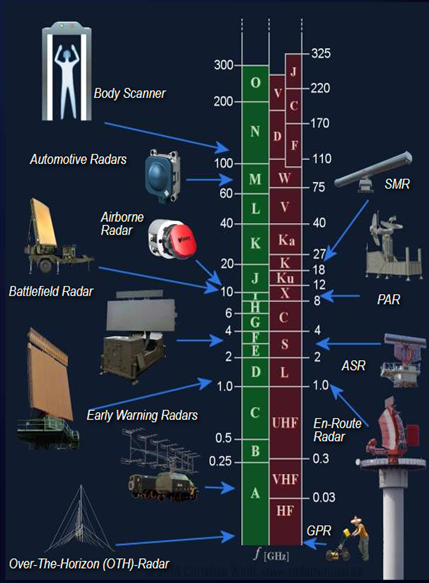
Figure 2: Typical applications of radar and the frequencies they utilize
Principles of Operation
Radar measurement of distance and direction is driven using radiated electromagnetic energy. These electromagnetic waves are reflected if they meet an electrically leading surface, such as metal. If these reflected waves are received again at the place of their origin, that means an obstacle is in the propagation direction.
Electromagnetic energy travels through the air at a constant speed - approximately the speed of light (300,000 kilometers per second or 186,000 miles per second). The distance between the reflecting object (airplanes, ships, or cars) and the radar site is determined by measuring the time between transmission and reception of the energy pulses.
The electromagnetic waves travel in a straight line and are not significantly impacted by atmospheric conditions, such as temperature, humidity, and altitude. By using specially designed antennas, this energy can be focused to a desired direction. These principles are used to determine the distance, direction, size, and speed of the reflecting object. Radar has many advantages compared to visual observation:
In general, a radar system probes its environment with specially designed waveforms to identify and characterize targets of interest.
- It operates at any time of day, regardless of light.
- It operates in all weather conditions, including fog and rain. Depending on the frequency, it can penetrate walls or layers of snow.
- It has very broad coverage and can observe objects at far greater distances.
- It detects and tracks moving objects and can aid in object recognition through high-resolution imaging.
- It can operate unmanned for long periods of time, providing automated alerts as needed.
Types of Radar Systems
Based on configuration, scanning pattern, and application, radar is classified into several varieties. The most basic radar systems are pulsed and monostatic. Pulsed systems transmit electromagnetic energy in periodic bursts or pulses. Monostatic systems position the radar transmitter and receiver at the same location and/or use the same hardware for both functions. Most radar systems used today are more sophisticated, with the following varieties being most common.
Bistatic Radar
Bistatic radar systems are comprised of a static transmitter and a static receiver that are separated by a distance with similar magnitude to the anticipated distance of the target. This type of radar is useful when the target reflects little energy in the direction of the receiver, such as a modern fighter jet with stealth technology, or in meteorology.
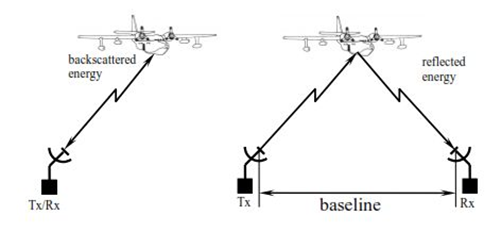
Figure 3: Monostatic (left) and bistatic (right) radar systems
Continuous-wave Radar
Continuous-wave (CW) radar emits electromagnetic energy constantly, in contrast with the more traditional pulsed energy transmission found in other radar systems. Because the energy is transmitted at a constant rate, the receiver in CW systems constantly receives reflected energy. CW radar cannot measure distance because there is no basis for the time delay between transmission and reception.
CW radar is effective in detecting motion, allowing the user to track moving objects and ignore stationary ones, such as the ground under low flying planes. Because of its simplicity, CW radar systems are inexpensive to manufacture, reliable, and compact. Some CW radar systems can reliably detection moving objects over 100 km away.
Doppler Radar
Doppler radar is a variation of CW radar that utilizes the Doppler effect to determine the velocity of detected moving objects. The Doppler effect is where an electromagnetic wave’s frequency is changed by bouncing off an object. When the system receives electromagnetic echoes with a different frequency than those that were initially transmitted, it can use this data to calculate the velocity.
Doppler radars are used in a wide variety of applications, including aviation, sounding satellites, Major League Baseball's Statcast system, meteorology, radar guns, healthcare, and missile defense systems. While commonly named in meteorology, Doppler radar is only one variety used for weather prediction and analysis.
Pulse-Doppler radar, as its name implies, uses Doppler radar technology and monostatic pulses to measure object distance and velocity. Originally, these technologies were too complex to be combined, but they have been widely used since the 1960s in military applications. Today, these systems are also commonly used for meteorology.
Monopulse Radar
Monopulse radar uses single, narrow pulses of electromagnetic energy to accurately determine the distance and direction of an object. Energy signals are sent out and split into two beams that extend to each side of an intended target. The difference between the two reflected signals is analyzed to determine the exact direction.
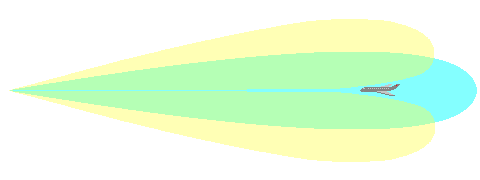
Figure 4: Separate beams of the monopulse radar (yellow) on either side of the primary radar target area (blue)
Monopulse radar systems are much more advanced than most other radar systems and were not common until the 1960s and 1970s. Today, these systems are primarily found in high-accuracy military applications.
Passive Radar
Passive radar systems are similar to bistatic radar systems, except they utilize transmitted radio waves from third-party transmitters, such as TV, FM radio, cell phone, and other telecommunication broadcast systems. These transmitters distribute signals for their own purposes, some of these signals cross paths with flying objects, and passive radar systems detect the reflections generated. The primary benefit of passive radar is that the transmitted waves cannot be identified as radar signals meant to detect objects, making the presence of the radar more covert.
Because the transmitter is not a part of the controlled system, it can be challenging to select and process transmission signals and determine presence, direction, and velocity data from this information. Passive radar has had limited success historically, with systems maturing into worthwhile options for aircraft detection, meteorology, and other purposes starting in the 21st century.
Synthetic-Aperture Radar (SAR)
Synthetic-Aperture Radar (SAR) systems are used for broad-area terrain imaging. These images are captured at high resolutions and are used for geology, environmental monitoring and mapping, military reconnaissance, and more. Like other types of radar, SAR systems can collect quality images regardless of the time of day or the atmospheric conditions, unlike more traditional imaging technologies.
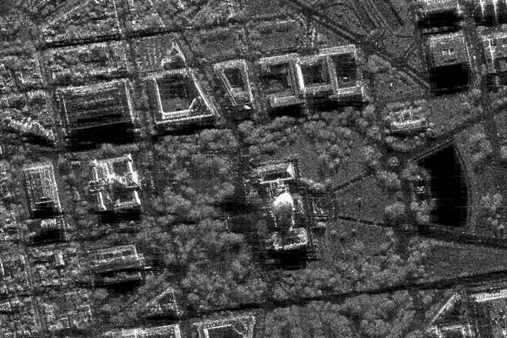
Figure 5: Image of U.S. Capitol and Library of Congress captured with SAR system
The cost of SAR systems is high compared to other radar systems, limiting their availability, but applications for smaller-scale uses have been explored in recent years.
Ground-Penetrating Radar
Ground-Penetrating Radar (GPR) systems scan over the ground and identify materials and objects buried underneath the surface. These systems are most commonly use to locate and identify utility systems buried below ground. Some systems can detect various characteristics of the ground itself, including density, soil/rock composition, and water content. Depending on the ground composition and frequencies used, measurements can reach upwards of 15 meters below the surface.
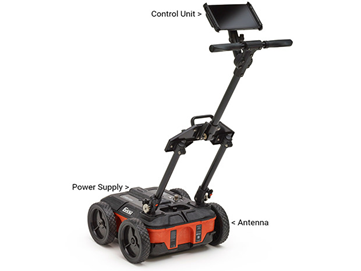
Figure 6: GPR device typically used to detect the presence of utilities
Radar Engineering
When developing a product with radar, the design difficulty can vary greatly depending on many factors, including the level of customization required, the experience of the design engineers available, and the time and financial resources available. These products are generally challenging to develop, but with the right decisions at the start of the design process, this process can become significantly easier.
Designing radar systems at the component level can provide a high level of flexibility and customization at the cost of requiring more experience and more resources to develop. Selecting the right radar IC, the right antenna to pair with the IC, and laying out these components on a PCB requires a great deal of experience.
As an alternative, utilizing radar module solutions can greatly reduce the expertise and resources needed to develop a product that uses radar. Many challenging design decisions will have already been made by the module designers, including the antenna selection and configuration. These products are also accompanied by significant documentation that makes them easier to design with and can potentially save months if not years of product development.
Once the design process is completed, radar products will have to undergo certification testing for all countries they will be sold and used in. With component-level designs, a very thorough level of certification testing takes place, and if testing does not pass, additional design phases and testing costs are required. Module solutions are certified before being sold, so the product-level certification process (which is still required) is much simpler and much easier to pass.
Whether a component or module-based solution is right for you, Arrow has everything to help you with your next radar product. Arrow has the engineering expertise to turn any idea, big or small, into a successful product that solves your customer’s problems, reduces risk, and accelerates time to market.
This article was written by Cameron Bloom, a Solutions Architect for Arrow Electronics.
References
Bistatic Radar. (n.d.). www.Telecomabc.Com; Telecom ABC. Retrieved June 16, 2020, from http://www.telecomabc.com/b/bistatic-radar.html
Chan, Y. K., & Koo, V. C. (2008). AN INTRODUCTION TO SYNTHETIC APERTURE RADAR (SAR). Progress In Electromagnetics Research B, 2, 27–60. https://doi.org/10.2528/pierb07110101
Continuous Wave Radar. (n.d.). Fas.Org. Retrieved June 16, 2020, from https://fas.org/man/dod-101/navy/docs/es310/cwradar/cwradar.htm
Delp, E. J. (n.d.). SAR Image Processing. Engineering.Purdue.Edu; Purdue University. https://engineering.purdue.edu/~ace/sar/sar.html
Griffiths, H. (2019). Passive Radar. Wiley Encyclopedia of Electrical and Electronics Engineering, 1–21. https://doi.org/10.1002/047134608x.w8401
Herndon, K., Meyer, F., Flores, A., Cherrington, E., & Kucera, L. (2020, April 16). What is Synthetic Aperture Radar? Earthdata.Nasa.Gov; NASA. https://earthdata.nasa.gov/learn/what-is-sar
Monopulse radar. (2020, March 4). Wikipedia. https://en.wikipedia.org/wiki/Monopulse_radar
Pulse-Doppler radar. (2020, February 18). Wikipedia. https://en.wikipedia.org/wiki/Pulse-Doppler_radar
Radar Basics. (2009). In Radartutorial. https://www.radartutorial.eu/druck/Book1.pdf
Skolnik, M. I. (2018). Radar - History of Radar. In Encyclopædia Britannica. Encyclopædia Britannica, Inc. https://www.britannica.com/technology/radar/History-of-radar
What is GPR: A Brief Description by GSSI. (n.d.). GSSI Geophysical Survey Systems, Inc. Retrieved June 16, 2020, from http://geophysical.com/whatisgpr
What is Synthetic Aperture Radar? (n.d.). www.Sandia.Gov; Sandia National Laboratories. Retrieved June 16, 2020, from https://www.sandia.gov/radar/what_is_sar/
Wolff, C. (n.d.). Waves and Frequency Ranges. Radartutorial.Eu; Dipl.-Ing. (FH) Christian Wolff. https://www.radartutorial.eu/07.waves/Waves%20and%20Frequency%20Ranges.en.html
Wolff, C. (2020). Continuous Wave Radar. Radartutorial.Eu; Dipl.-Ing. (FH) Christian Wolff. https://www.radartutorial.eu/02.basics/Continuous%20Wave%20Radar.en.html
Wolff, C., & Murphy, B. (2012). Basic Principles of Radar. In Richardson RFPD. https://www.richardsonrfpd.com/docs/rfpd/Richardson-RFPD_Basic-Principles-of-Radar.pdf


